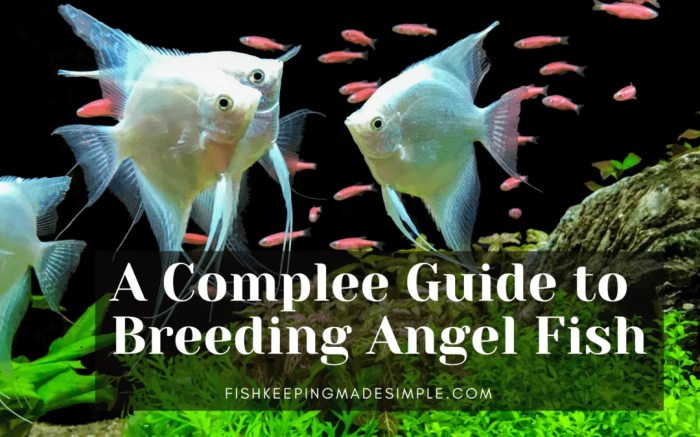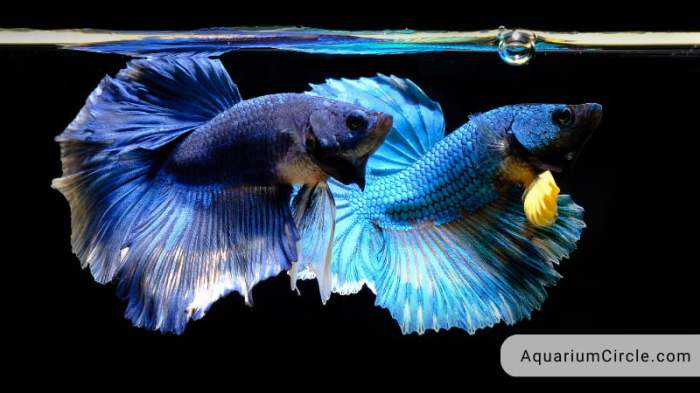Embark on a journey into the world of fish breeding with ‘How to Breed Fish: 5 Steps to Successful Fish Breeding’, delving into essential tips and insights for successful breeding experiences.
Explore the key components of tank setup, understand fish reproductive behavior, and follow the steps to ensure a thriving breeding environment for your aquatic companions.
Importance of Proper Tank Setup for Fish Breeding

Proper tank setup is essential for successful fish breeding as it provides the ideal environment for fish to spawn and raise their fry.
Ideal Tank Conditions
- Water Quality: Clean, filtered water is crucial for breeding success. Regular water changes and proper filtration help maintain optimal water conditions.
- Temperature: Maintaining a stable temperature within the recommended range for the specific fish species is vital for triggering breeding behavior.
- pH Levels: Monitoring and adjusting pH levels to match the requirements of the fish species helps create a suitable breeding environment.
Role of Tank Decorations and Hiding Spots
Tank decorations, such as plants and caves, provide hiding spots for fish during the breeding process. These hiding spots reduce stress levels, encourage natural behavior, and provide a safe space for breeding pairs to lay eggs and protect their offspring.
Understanding Fish Reproductive Behavior

Fish reproductive behavior can vary greatly depending on the species. Understanding these behaviors is crucial for successful breeding in aquarium settings.
Identifying male and female fish is essential for breeding purposes. In many species, males and females have distinct physical characteristics that can help differentiate between them. For example, male guppies are typically more colorful and have longer fins compared to females. It is important to correctly identify the sex of the fish to ensure successful breeding.
Types of Fish Breeding Behaviors
- Spawning: Many aquarium fish species reproduce through spawning, where the female releases eggs and the male fertilizes them externally. This process often involves elaborate courtship rituals to attract a mate.
- Mouthbrooding: Some fish, like certain cichlids, exhibit mouthbrooding behavior where the female carries fertilized eggs in her mouth until they hatch. This unique strategy helps protect the offspring from predators.
- Livebearing: Livebearers, such as guppies and mollies, give birth to live young instead of laying eggs. This type of breeding behavior is fascinating to observe in aquariums.
Courtship Rituals and Spawning Process
- Male betta fish build bubble nests on the water surface to attract females. Once a female approaches the nest, the male will display vibrant colors and fins to court her.
- Angelfish engage in a sophisticated courtship dance before spawning. The male and female swim together, rubbing against each other to stimulate egg and sperm release.
- For egg scatterers like tetras, breeding involves the female releasing eggs into the water, followed by the male fertilizing them. These eggs are often scattered among plants for protection.
Steps to Successful Fish Breeding

When it comes to successfully breeding fish, there are several important steps to follow in order to ensure the best results. From selecting compatible fish to monitoring the eggs and fry, each step plays a crucial role in the breeding process.
Selecting Compatible Fish for Breeding
Before beginning the breeding process, it is essential to select fish that are compatible for breeding. This involves choosing healthy fish of the same species that are in optimal breeding condition.
- Ensure that the fish are mature and ready for breeding.
- Consider the compatibility of the fish in terms of behavior and size.
- Avoid breeding fish that are known to be aggressive or incompatible.
Conditioning Fish for Breeding
Properly conditioning the fish for breeding is crucial in order to increase the chances of successful reproduction. This includes adjusting their diet and environment to simulate breeding conditions.
- Provide a varied diet rich in protein to increase the fish’s reproductive capabilities.
- Adjust the water parameters, such as temperature and pH, to mimic the natural breeding environment.
- Ensure that the fish have adequate space and hiding spots for breeding.
Monitoring Eggs, Fry, and Parental Care
After the breeding process has taken place, it is important to monitor the eggs, fry, and parental care to ensure the best possible outcome.
- Keep a close eye on the eggs to ensure they are fertilized and developing properly.
- Monitor the fry closely to ensure they are feeding and growing well.
- Observe the parental fish to ensure they are providing proper care and protection to the offspring.
Ultimate Conclusion

Dive deep into the art of fish breeding with the knowledge gained from ‘How to Breed Fish: 5 Steps to Successful Fish Breeding’, empowering you to create a harmonious and successful breeding setup for your aquatic pets.